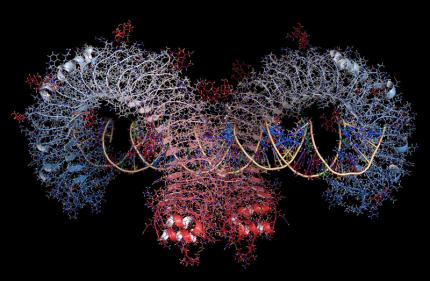To date, ten mammalian Toll-like receptors (TLRs) have been identified. They recognize specific molecular patterns associated with microbial pathogens and induce the activation of host-defense genes. Recently, with the completion of the human and mouse genome sequence, an eleventh TLR has been identified. Using the TIR domain of TLR4 to search the NCBI databases, Zhang et al. have detected the sequence of TLR11 from a mouse liver EST database (GenBank accession number AY531552). This gene encodes a 97-kD protein which displays all the hallmarks of known TLRs, that is a leucine-rich domain, a transmembrane domain and a TIR domain.
TLR11 is highly expressed in the liver, bladder and kidney but weakly in the spleen, a pattern that differs from the other TLRs, suggesting that TLR11 might play a specific role in these organs. Zhang et al. hypothesized that TLR11 might be involved in responses to bacteria that cause infections of the urinary tract, such as uropathogenic Escherichia coli. Various uropathogenic strains were cultivated then heat-killed and used to stimulate 293-luciferase cells stably expressing TLR11. The uropathogenic strains induced a strong activation of NF-κB in these cells in contrast to the nonpathogenic strains such as E. coli BL21 and DH5α. Known TLR ligands, including lipopolysaccharide (LPS), peptidoglycan (PGN) and poly(I:C), failed to activate NF-κB in the TLR11-expressing 293 cells. These data suggest that TLR11 recognizes a molecular pattern that is specific to E. coli uropathogenic strains.
TLR11 activates the common TLR signaling pathway that involves the intermediates MyD88, IRAK and TRAF6 [2]. TLR11 sequences are present in the genomes of most mammalian species including humans. However, the putative TLR11 ORF contains several Stop codons suggesting that TLR11 might not be expressed in humans.
To further study the biological role of this new TLR, mice deficient in TLR11 were generated. Macrophages isolated from these mice were stimulated with known TLR ligands (LPS, PGN, poly(I:C)), and heat-killed uropathogenic or nonpathogenic E. coli. All three TLR ligands induced the production of TNF-α in TLR11-deficient and wild-type macrophages at similar levels. In contrast, the response to the uropathogenic strain was dramatically reduced in the knock-out macrophages compared to the wild-type cells, whereas the response to the nonpathogenic strain was almost unaffected. These results confirm that TLR11 recognizes a component in the uropathogenic E. coli that is absent from the nonpathogenic strain. The genome of uropathogenic E. coli, such as CFT073 (ATCC 700928) is 590 Kbp longer than the genome of nonpathogenic and laboratory E. coli strains and is particularly rich in genes that encode virulence factors such as fimbrial adhesins and autotransporters[3]. One of these microbial elements could be the molecular pattern recognized by TLR11.
InvivoGen provides the murine TLR11 gene in a pUNO plasmid (puno-mtlr11t).
References:
1. Zhang D. et al., 2004. A toll-like receptor that prevents infection by uropathogenic bacteria. Science. 303:1522-1526.
2. O'Neill LA. 2002. Signal transduction pathways activated by the IL-1 receptor/toll-like receptor superfamily. Curr Top Microbiol Immunol. 270:47-61. Review.
3. Welch RA. et al.,2002. Extensive mosaic structure revealed by the complete genome sequence of uropathogenic Escherichia coli. Proc Natl Acad Sci USA. 99(26):17020-4.
